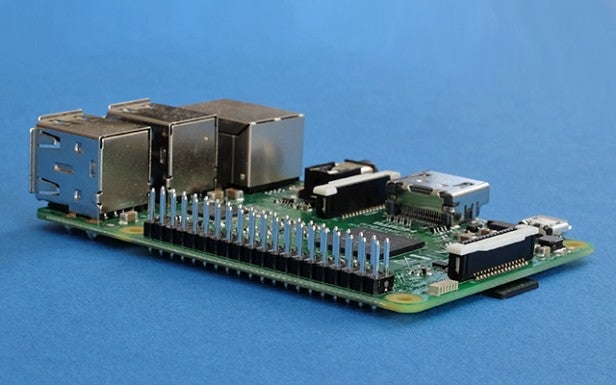Raspberry Pi 3 Review
Raspberry Pi 3 Review
Mini miracle PC gets some extra ports

Sections
- Page 1 Raspberry Pi 3 Review
- Page 2 OS, Raspbian and Software Review
- Page 3 Performance and Verdict Review
Verdict
Pros
- Great value
- Significant performance increase
- Great free online learning resources
- Built-in wireless connections
Cons
- No Android support yet
Key Specifications
- Review Price: £32.10
- Quad-core 1.1GHz CPU
- VideoCore IV GPU
- 1GB RAM
- 4x USB2.0, HDMI, Ethernet
- 802.11n Wi-Fi, Bluetooth 4.1
What is the Raspberry Pi 3?
The Raspberry Pi 3 is the latest version of the circuit-board computer that caused such a fuss in 2012. This is the most powerful version of the Pi, making the £4.25 Pi Zero look like, well, it’s worth about four quid.
To some this may seem the sort of annual refresh from your favourite phone makers. However, in adding greater power and both Wi-Fi and Bluetooth to the Pi without increasing the price, it’s now a more versatile “all-in-one” board. For almost everyone, it’s clearly the best Pi yet.
For those not solely interested in learning the basics of Python, C or Java, the added power and features make it far more powerful as a retro games machine, and more convenient as a media streamer too. There’s very little to dislike at £30.
Video: Raspberry Pi 3 vs Pi 2 – What’s the difference?
Raspberry Pi 3 – Design and Features
The Raspberry Pi 3 looks almost identical to the Rasberry Pi 2. This means owners of Raspberry Pi 2s who have bought, made or 3D-printed their own cases will be able to slot this new model into them. For those who haven’t come across one of these computers before, it’s roughly the same size as the palm of your hand.
Related: A complete guide to 3D printing
For £30 you get only the circuit-board computer: no power supply, no case, no cables. However, any owners of Android or Windows phones will be able to use their 5V phone charger and cable to power the Raspberry Pi 3. It uses microUSB, although you’ll need a fairly high-amp plug (up to 2.5A if you have lots of peripherals) rather than the 1A ones that tend to come with cheaper phones.

The Pi 3 has identical ports to the old Raspberry Pi 2. Four USBs, an Ethernet port and a full-sized HDMI make up your main connectors. None of the USBs are 3.0-speed, just 2.0, but anything much faster would needlessly push up the budget when these boards are designed to run off a microSD card.
There’s no built-in storage to the Raspberry Pi, only a microSD slot on its underside. This port supports the higher-capacity microSDXC standard, so you could grab a 128GB microSD card for £40 and have a formidable portable mini-media player on your hands.
The one other conventional port on the Raspberry Pi 3 is a 3.5mm audio jack.
Where the Raspberry Pi 3 strays from the Raspberry Pi 2 blueprint is in including Wi-Fi (b/g/n) and Bluetooth on the board itself. In previous boards you had to use USB adapters for these features. While they can be bought for a few pounds, they add bulk to the board. You may still wish to use these if your current case interferes with wireless signals.
When the Pi 3 was released, the default Raspbian OS didn’t support these new connections, but support has since been patched in, and as the de facto OS many users will start with, this is great news.
Related: Best Raspberry Pi Projects

The Raspberry Pi 3 still features 40 GPIO pins. These are used to connect items such as LEDs, motors and anything else you can think of for proper home-brew projects. Sitting between the HDMI and 3.5mm ports is the camera connection port, also inherited from the Raspberry Pi 2. The Raspberry Pi Foundation sells a 5-megapixel camera for around £20.
Depending on your use case for the Pi 3, you’ll either use these connectors all the time or leave them for the more simple USB connectors. For those attracted to the board for tweaking and coding, the Raspberry Pi 3 is ready to hook up with the new BBC micro:bit too.


